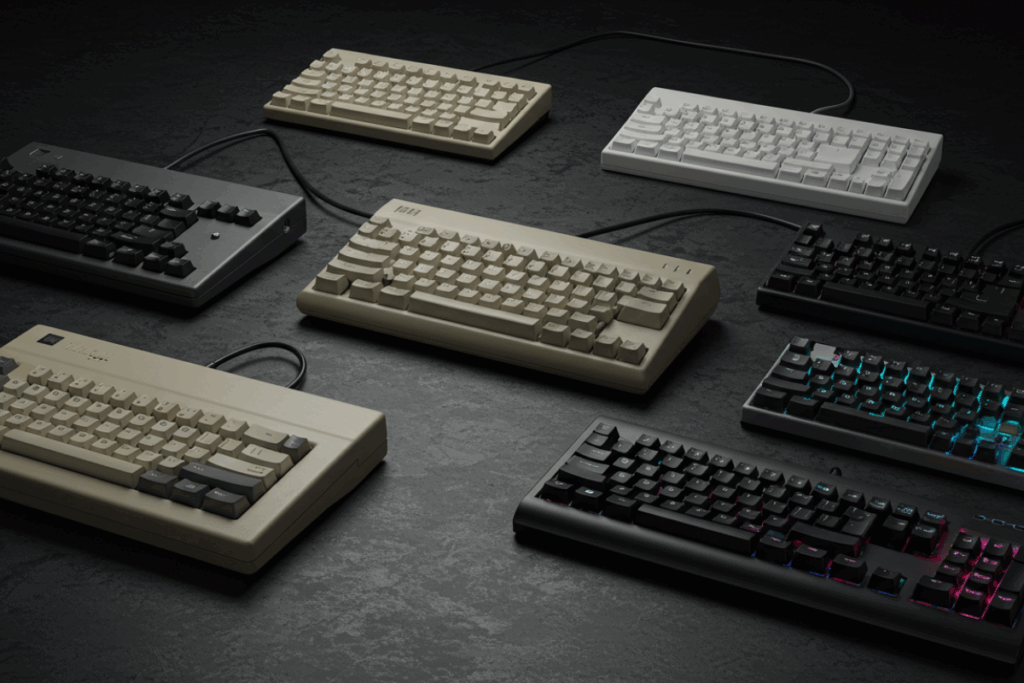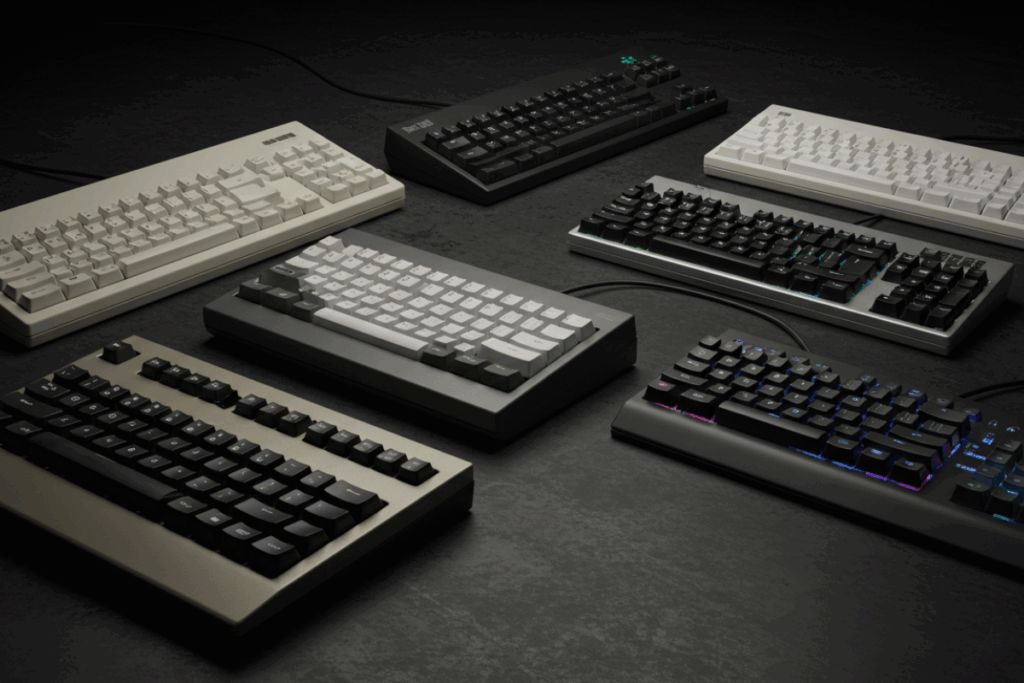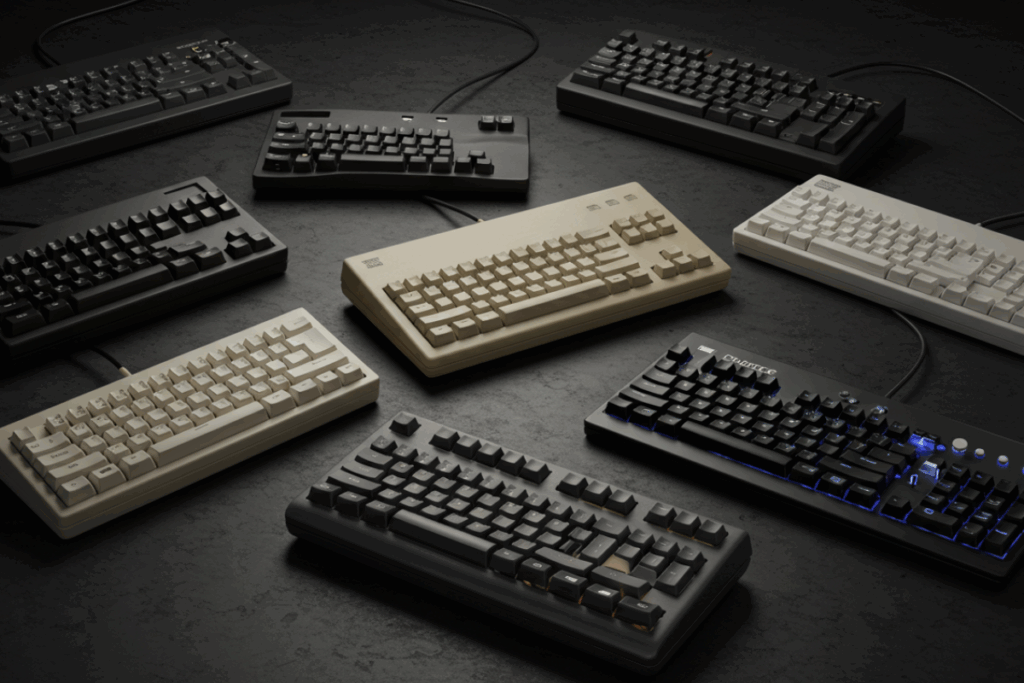So, how do you understand this? I always say that keyboards are more than just tools—they are like silent storytellers of technology. Every click, every keypress, every sound is part of a bigger history that shaped not only computers but also gaming, design, music, and even productivity.
As someone who has been a keyboard nerd for years, I can’t help but feel nostalgic when I look back at some of the most iconic keyboards ever created.
In this article, I’ll take you on a ride through 10 historical keyboards that completely changed the industry. These are not just random old keyboards—they are game-changers that introduced new layouts, designs, or functions that shaped the way we type today.
And yes, I’ll also leave plenty of links (both from my blog and other trusted sources like Wikipedia) so you can dive even deeper.
Before we dive in, let me remind you: if you love keyboards as much as I do, check out some of my favorite posts on Keyboards Technology, like The 10 Most Iconic Keyboards in History and The Future of Foldable and Flexible Keyboards.
1. IBM Model M (1985) – The Click Heard Around the World
If there’s one keyboard that deserves the crown, it’s the IBM Model M. Released in 1985, this beast is the father of what many call the “golden era of typing.”
Its buckling spring switches made every keystroke loud, crisp, and unforgettable. To this day, people still hunt these keyboards down on eBay because of their legendary durability and that satisfying “clack.”
Typing on a Model M feels like using a typewriter but with the power of a computer. I personally believe this keyboard was the turning point that showed people that typing could be an enjoyable experience, not just a boring task. It was built like a tank—seriously, you could drop it and it would probably break the floor before breaking itself.
This keyboard influenced mechanical keyboards today, making it a must-have for collectors. If you ever wondered why mechanical fans love loud, clicky switches, well… you can thank the Model M.
🔗 Related on my blog: The Evolution of Clicky Switches: From Typewriters to Today

2. Apple Extended Keyboard II (1990) – The Typist’s Dream
In 1990, Apple delivered what many fans call the best typing experience ever created. The Apple Extended Keyboard II had Alps switches that felt smooth, precise, and a little softer than IBM’s Model M. What I love about this keyboard is that it was designed for long typing sessions, perfect for writers, coders, and creative professionals.
Apple’s design also emphasized aesthetic simplicity. Even back in the early ’90s, Apple was already thinking about clean, minimal layouts—something that’s still part of their DNA today. I’ve seen people restore these keyboards and use them even now with modern Macs, which shows just how timeless it is.
For me, this keyboard showed the industry that keyboards didn’t need to be just functional—they could also be beautiful and ergonomic.
🔗 If you’re into design-focused keyboards, check this out: How Keyboards Are Designed: A Look Behind the Scenes
3. Commodore 64 Keyboard (1982) – Gaming Meets Computing
The Commodore 64 wasn’t just a computer; it was a cultural phenomenon. Its keyboard came built into the machine itself, which was revolutionary for home computing at the time. People didn’t just use it for typing—they used it for gaming, coding, and creativity.
I like to think of the Commodore 64 as the ancestor of modern gaming keyboards. It brought computing into living rooms around the world and proved that keyboards could be more than just office tools. For many kids in the ’80s, this was their first experience with programming.
It’s crazy to think that the same device used for typing commands could also be used to load up classic games. That mix of fun and functionality made it unforgettable.
🔗 More on gaming and keyboards: The Role of Keyboards in Competitive Esports
4. Microsoft Natural Keyboard (1994) – The Ergonomic Revolution
By the mid-1990s, people were typing more than ever, and hand fatigue became a real issue. Microsoft introduced the Natural Keyboard in 1994, the first mass-market ergonomic keyboard. It had a split design that forced your hands into a more natural position.
At first, people thought it looked weird, but soon it became a life-saver for many professionals. I honestly think this keyboard opened the door for today’s ergonomic designs, from compact split layouts to curved wireless boards.
Typing on one feels strange at first, but after a while, you realize how much strain it saves. Without this design, ergonomic keyboards today probably wouldn’t exist.
🔗 Want more on this? Read: How Ergonomic Keyboards Can Prevent Wrist Pain

5. Das Keyboard (2005) – Typing Without Labels
When Das Keyboard first appeared, people were shocked. No labels on the keys? How were you supposed to type?! But the truth is, this keyboard was made for experts. If you could type without looking, you didn’t need labels anyway.
This was one of the first modern mechanical keyboards that brought back the love for tactile switches at a time when everyone was using cheap membranes. For me, Das Keyboard was the spark that lit the mechanical keyboard revival we see today.
It was bold, daring, and super geeky—exactly the kind of innovation that shakes an industry.
🔗 Learn more: Are Mechanical Keyboards Always Better? A Deep Dive
6. Razer BlackWidow (2010) – The Gaming Icon 🎮
You can’t talk about gaming keyboards without mentioning the Razer BlackWidow. Released in 2010, it was the first mechanical keyboard truly designed for gamers. With programmable macros, RGB lighting, and mechanical switches optimized for gaming, it set the standard for the entire industry.
I still remember the first time I saw the glowing green keys—it was like something out of a sci-fi movie. Gamers loved it not just for performance but also for style. This was the keyboard that made RGB lighting mainstream.
If you play games today on a flashy keyboard, you can thank the BlackWidow for starting the trend.
🔗 Related: The Best RGB Keyboards for a Gamer Setup
7. Logitech G15 (2005) – The Display Game-Changer
The Logitech G15 was one of the most unique keyboards ever released. It had a built-in LCD screen that could display game stats, system info, or even music details. This was a dream for gamers in the mid-2000s.
Even though modern keyboards don’t use built-in screens anymore (we use second monitors or apps now), the G15 proved that keyboards could offer extra functionality beyond typing. It was ahead of its time.
Personally, I think the G15 represents the experimental spirit of keyboards—trying new things to push boundaries.
🔗 More fun keyboards here: The Most Unique Keyboards Ever Created
8. IBM Selectric (1961) – The Typewriter That Inspired It All
Before computers, there were typewriters, and none was more iconic than the IBM Selectric. Released in 1961, it replaced traditional typebars with a golf-ball head that moved across the page. This innovation made typing faster and reduced jams.
Even though it wasn’t a computer keyboard, it directly inspired the design of modern key switches. Without it, we probably wouldn’t have today’s typing experience.
It’s also a reminder that history matters. Modern keyboards owe a lot to typewriters.
🔗 More history here: A Deep Dive Into the History of Keyboard Shortcuts

9. Happy Hacking Keyboard (HHKB) (1996) – The Minimalist Legend
For programmers and minimalists, the Happy Hacking Keyboard (HHKB) is legendary. It has a compact layout with no function row, no arrow keys, and no numpad. At first glance, it looks stripped down—but that’s the point.
I personally love the HHKB because it shows how less can be more. It focuses only on the keys that matter, making it super portable and efficient for coders.
Even today, many professionals still swear by this keyboard for its Topre switches and iconic design.
🔗 Check this out: 10 Compact Keyboards for Minimalist Setups
10. SteelSeries Apex Pro (2019) – The Adjustable Future
The SteelSeries Apex Pro introduced something revolutionary: adjustable actuation points. That means you can decide how sensitive each key should be. Want super-fast presses for gaming but deeper travel for typing? You got it.
I believe this is the future of keyboards—personalization at its peak. The Apex Pro is modern, sleek, and bridges the gap between casual users and hardcore enthusiasts.
It’s a reminder that the keyboard industry never stops innovating.
🔗 Related: The Best Keyboards with Adjustable Actuation Points
Final Thoughts
Looking back, it’s amazing how keyboards shaped our digital world. From the clunky IBM Model M to the futuristic SteelSeries Apex Pro, each of these keyboards changed the way we type, work, and play. And I believe the best is still to come—maybe foldable, AI-powered, or even holographic keyboards (imagine that!).
👉 If you liked this article, don’t forget to share it, drop a comment below, and tell me which keyboard you use right now. I’d love to hear your story!
Also, check out more of my blog at Keyboards Technology where I cover everything from myths about keyboards to the psychology of typing.

